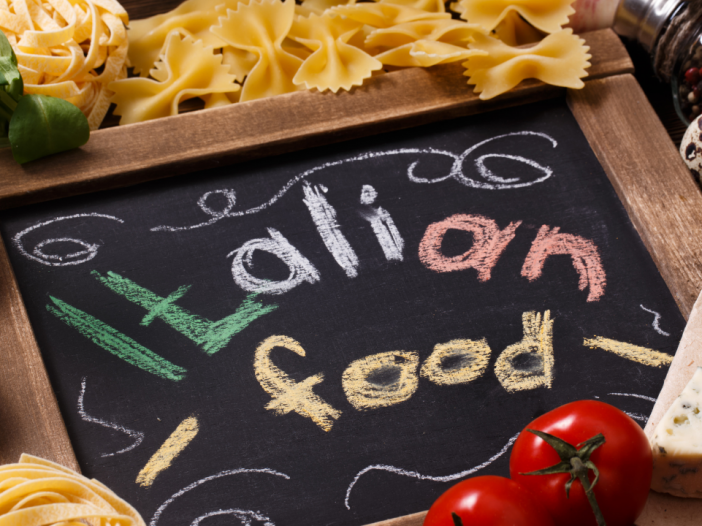
Are you a food enthusiast who appreciates the rich culinary traditions and vibrant flavors of Italy?
In Italian cuisine, every dish tells a story, and every bite brings you closer to the heart of Italy. In If you’ve ever dreamed of turning your passion for Italian food into a thriving restaurant, this guide is for you. We’ll walk you through every delicious step on how to start an Italian restaurant from scratch, covering everything from planning and financing to budgeting and launching your restaurant.
Step-by-step Guide on How to Start an Italian Restaurant and Run it Successfully

1. Develop a Business Plan
A well-thought-out business plan serves as the foundation for your restaurant’s success. This plan should include the following components:
- Concept and Branding: Define your restaurant’s theme, style, and target audience. Will you focus on traditional Italian cuisine, authentic pizzas, or a modern take on classic dishes? Make sure your concept stands out and appeals to the local market.
- Market Analysis: Research the local dining scene to understand customer preferences, identify competitors, and pinpoint market gaps that your restaurant can fill.
- Menu Planning: Develop a preliminary menu that aligns with your culinary vision. Consider seasonal ingredients, sourcing options, and dish pricing to maintain quality while ensuring profitability.
- Financial Projections: Establish a detailed budget, estimate your startup costs, and forecast revenue. This may include rent, renovations, equipment, staffing, and inventory.
2. Secure Financing
With a solid business plan in place, it’s time to secure the necessary funding. Here are some common financing options to consider:
- Personal Savings: Using your savings to fund the restaurant gives you full ownership without incurring debt. However, be aware of the financial risks if the business doesn’t turn a profit immediately.
- Bank Loans: Traditional bank loans can provide significant capital, especially for covering startup costs like equipment and inventory. Be prepared with a strong business plan and good credit history to improve your chances of approval.
- Investors: Partnering with investors can provide essential capital and may bring valuable expertise and connections. Keep in mind that you may need to share ownership and profits.
- Crowdfunding: Online platforms like Kickstarter and GoFundMe offer unique opportunities to raise capital by appealing to the public. Create a compelling campaign that outlines your restaurant’s story, vision, and financial needs, offering rewards for contributions.
3. Understand the Costs Involved
Starting an Italian restaurant requires a significant investment. Understanding the key expenses will help you plan your budget more effectively. Here’s a breakdown:
- Location and Rent
- Finding the right space is crucial. Prime locations come with higher rent, ranging from $1,000 to $10,000+ per month.
- Budget for at least 3-6 months of rent upfront.
- Renovation and Interior Design
- To create an authentic Italian atmosphere, expect to spend $20,000 to $150,000 on remodeling, décor, and furniture.
- Licensing and Permits
- Obtain necessary licenses, such as food service permits and liquor licenses. Costs can range from $1,000 to $15,000.
- Equipment and Supplies
- Kitchen equipment costs can vary from $30,000 to $100,000, depending on whether you choose new or used items.
- Initial Inventory
- High-quality Italian ingredients are essential. Expect initial costs around $5,000 to $10,000.
- Staffing Costs
- Hiring skilled chefs and staff can cost $40,000 to $200,000 per year, depending on your restaurant’s scale.
- Marketing and Promotions
- Allocate $5,000 to $20,000 for pre-opening marketing efforts to build brand awareness.
- Miscellaneous Expenses
- Factor in extra costs such as utilities, insurance, and point-of-sale systems, totaling an additional $10,000 to $30,000.
4. Choose the Perfect Location
Selecting the right location is crucial for your restaurant’s visibility and foot traffic. Consider factors such as:
- Foot Traffic and Accessibility: A high-traffic area increases exposure, while easy access and parking can encourage customers to visit.
- Proximity to Competitors: Avoid areas that are saturated with Italian restaurants unless you have a unique selling point.
- Lease Terms: Review lease agreements carefully, considering factors like rent escalation clauses, renovation permissions, and lease duration.
5. Plan Your Menu with Care
Your menu is the heart of your restaurant. Here’s how to make it stand out:
- Embrace Authentic Italian Flavors: Use high-quality, authentic Italian ingredients such as olive oil, fresh pasta, and imported cheeses.
- Incorporate Seasonal Ingredients: Adjust your menu based on seasonal availability to ensure freshness and cost-effectiveness.
- Offer a Variety of Dishes: Include vegetarian, gluten-free, and vegan options to cater to a diverse customer base.
- Test Your Menu: Conduct tastings with friends, family, and happy hour enthusiasts to refine the dishes before your grand opening.
6. Hire and Train Staff
Your staff will be key to providing an exceptional dining experience. Take these steps to build a great team:
- Hire Experienced Chefs: Look for chefs with experience in Italian cuisine who can bring authenticity to your dishes.
- Provide Comprehensive Training: Train your front-of-house staff to provide excellent customer service and educate them about the menu.
- Create a Positive Work Culture: Promote a collaborative and supportive environment to reduce turnover and improve staff morale.
7. Market Your Restaurant
Building a strong brand and marketing strategy will help attract customers from the start. Consider these tactics:
- Social Media Marketing: Use platforms like Instagram and Facebook to share behind-the-scenes content, special offers, and opening updates.
- Website and SEO: Create a website with an online reservation system. Optimize for local SEO to attract customers searching for Italian restaurants in your area.
- Community Engagement: Partner with local businesses and participate in community events to build relationships and brand awareness.
- Grand Opening Event: Host a special event for your restaurant’s opening on Laparizone. Invite local influencers and food bloggers to generate buzz.
How Much Does It Cost to Start an Italian Restaurant?

Starting an Italian restaurant is an exciting opportunity for food enthusiasts and entrepreneurs eager to bring authentic cuisine to their community. However, launching a restaurant requires a significant investment, with various expenses that need to be carefully planned and budgeted. According to therestauranthq, Startup costs for a new restaurant typically range from $95,000 to over $2 million. Below is a detailed breakdown of the typical costs associated with opening an Italian restaurant, along with estimates for each category.
Location and Rent
- Finding the Right Space
The cost of renting or purchasing a space can vary significantly based on the location, size, and condition of the property. Urban areas with high foot traffic tend to command higher rental prices, while suburban or less frequented locations may be more affordable.
- Monthly Rent Estimate
Renting a commercial space typically ranges from $1,000 to $10,000+ per month, depending on the factors mentioned above. It is advisable to budget for at least 3-6 months of rent upfront to cover initial expenses and secure the location.
Renovation and Interior Design
- Creating an Italian Atmosphere
To offer an authentic dining experience, the restaurant’s interior should reflect an Italian ambiance. Renovation costs may include remodeling, painting, and purchasing decor elements such as artwork, furniture, and lighting that evoke the feel of Italy.
- Cost Estimate
Expect to spend between $20,000 and $150,000 on renovations, depending on the current state of the property and the desired aesthetic. High-quality materials and custom designs can increase costs but may enhance the dining experience and brand perception.
Licensing and Permits
- Getting Legalized
Opening a restaurant involves acquiring various licenses and permits, including a business license, food service permit, health department approval, and liquor license (if applicable). The requirements and fees can vary by state and locality.
- Cost Breakdown
The cost for licenses and permits generally falls between $1,000 and $15,000, influenced by the restaurant’s location, the type of cuisine served, and whether alcohol will be sold.
Equipment and Supplies
- Kitchen Equipment
Operating a restaurant requires a wide range of kitchen equipment, such as ovens, refrigerators, stoves, pasta makers, and dishwashers. The quality and condition (new or used) of the equipment will also affect the overall cost.
- Cost Guidance
Allocate $30,000 to $100,000 for kitchen equipment and supplies. Purchasing quality equipment is crucial for ensuring efficient operations and reducing long-term maintenance costs.
Initial Inventory
- Ingredients and Supplies
Stocking the kitchen with authentic Italian ingredients like pasta, olive oil, tomatoes, cheese, and wine is essential. The cost will depend on the menu’s variety and the restaurant’s scale.
- Initial Investment
Expect to spend between $5,000 and $10,000 for the initial inventory to cover essential ingredients and supplies.
Staffing Costs
a. Hiring Employees: Staffing is a major operational cost. Hiring skilled chefs, servers, managers, and kitchen staff is essential for delivering a quality dining experience. The number of employees will depend on the restaurant’s size and hours of operation.
b. Wage Estimates: Annual staffing costs typically range from $40,000 to $200,000, depending on the number of employees and their skill levels. High-end restaurants or those in competitive markets may incur higher payroll expenses.
Marketing and Promotions
a. Building Your Brand: Effective marketing is crucial before the restaurant’s opening. Advertising efforts may include social media campaigns, local print materials, website development, and community engagement.
b. Budgeting for Marketing: Set aside $5,000 to $20,000 for pre-opening marketing and promotional efforts to create awareness and attract customers.
Miscellaneous Costs
a. Unforeseen Expenses: Additional costs, such as utilities, insurance, point-of-sale systems, and outdoor signage, need to be considered. These expenses often fluctuate based on the restaurant’s specific needs.
b. Estimated Extra Costs: Plan for an extra $10,000 to $30,000 to cover miscellaneous expenses and unforeseen costs.
Final Total Cost Estimate
The total cost to open an Italian restaurant can range from $100,000 to $500,000+, depending on factors like location, restaurant size, and the concept’s complexity. High-end locations with extensive renovations and upscale menus may push costs towards the upper end of this range.
Conclusion
Starting an Italian restaurant involves a mix of passion, careful planning, and strategic execution. From crafting a unique menu to securing financing, every step is crucial to building a thriving business that celebrates the rich culinary heritage of Italy. By understanding the costs, planning your budget, and executing a robust marketing strategy, you can make your dream restaurant a reality.
Are you ready to bring your Italian culinary vision to life?
Laparizone is an event management tool that can help you seamlessly organize your grand opening, special events, or cooking classes.








